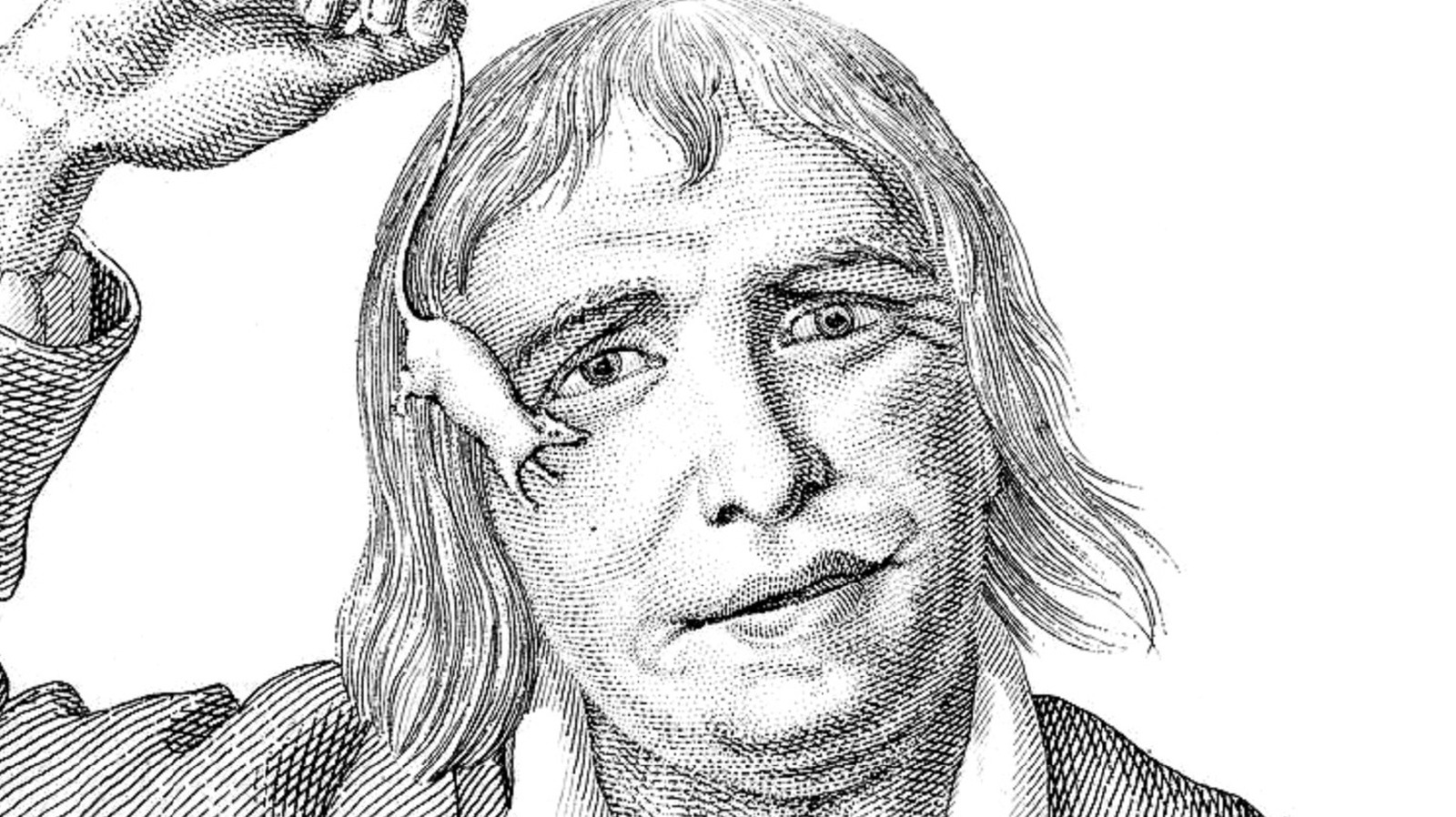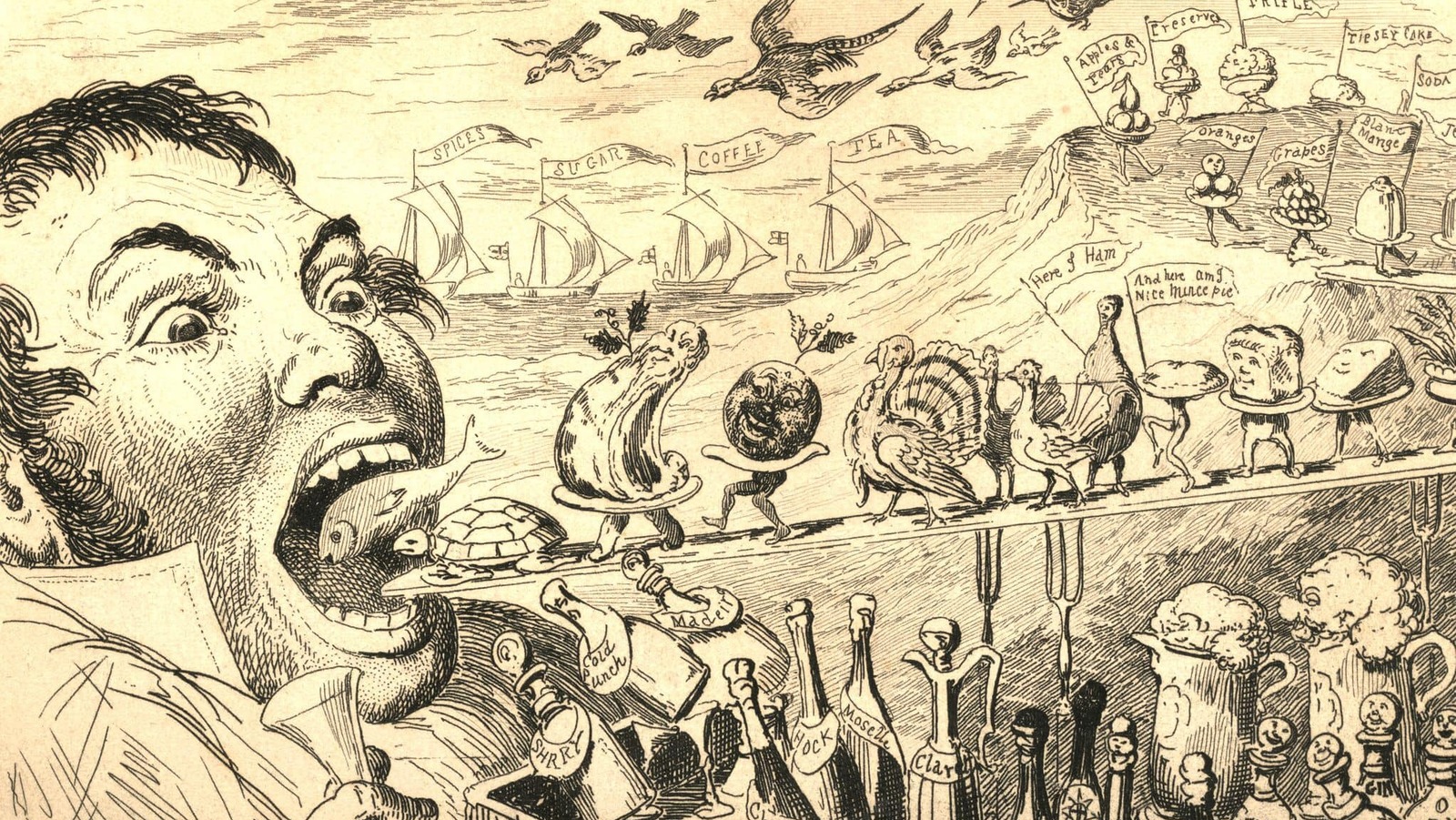Insights Into The Mysterious Tarrare Organs: A Historical Medical Perspective
The term "Tarrare organs" refers to the intriguing and perplexing case of an 18th-century Frenchman known only as Tarrare. His condition baffled medical professionals and continues to be a topic of fascination for historians and medical experts alike. Born in rural France, Tarrare exhibited an insatiable appetite that was uncharacteristic and inexplicable. Despite consuming large quantities of food, he remained thin and emaciated, prompting physicians to examine his organs posthumously in hopes of uncovering the reasons behind his unique condition.
Tarrare's life was marked by extraordinary medical anomalies, including his voracious appetite and the mysterious inner workings of his body. Throughout his life, he was subjected to numerous tests and examinations by some of the most prominent medical minds of the time. However, even with the limited medical knowledge of the 18th century, Tarrare's condition remained largely unexplained. His story is not just a medical curiosity but also a reflection of the limitations and challenges faced by early medical science.
In this article, we will delve into the life and times of Tarrare, exploring the possible causes of his unusual condition and the subsequent examination of his organs. We will discuss the historical context of medical practices during Tarrare's time, the theories proposed by contemporary and modern-day scientists, and the impact of his case on future medical research. By examining the tarrare organs, we aim to shed light on this captivating medical mystery and provide insights into how it has influenced the understanding of similar conditions in modern medicine.
Read also:Simplifying Returns A Guide To Sephoras Return Policy
Table of Contents
- Who Was Tarrare? A Brief Biography
- Tarrare's Personal Details and Biodata
- What Was the Historical Context of Tarrare's Life?
- Exploring the Medical Anomalies of Tarrare
- How Did Tarrare's Diet and Appetite Define His Life?
- What Examinations Were Conducted on Tarrare?
- The Examination of Tarrare Organs: What Did They Reveal?
- Theories Behind Tarrare's Condition: What Do Experts Say?
- How Did Tarrare's Case Impact Future Medical Research?
- Modern Perspectives on Tarrare Organs
- Are There Similar Cases to Tarrare's in Medical History?
- Ethical Considerations in the Study of Tarrare Organs
- Frequently Asked Questions About Tarrare Organs
- Conclusion: The Legacy of Tarrare Organs
Who Was Tarrare? A Brief Biography
Tarrare was born around 1772 in rural France. His birth name remains unknown, and he is referred to by the moniker "Tarrare," possibly derived from the French word for "devour." As a child, Tarrare exhibited an insatiable appetite, consuming prodigious amounts of food yet remaining thin and frail. By his teenage years, he was performing in sideshows across France, showcasing his bizarre eating habits, which included consuming live animals and inanimate objects.
Despite his peculiarities, Tarrare enlisted in the French Revolutionary Army, where his condition quickly drew attention. His inability to satiate his hunger caused significant logistical challenges, prompting his superiors to engage the help of medical professionals. Tarrare's life was one of constant hunger, social alienation, and medical scrutiny, making him a subject of both sympathy and scientific intrigue.
Tarrare's Personal Details and Biodata
| Full Name | Unknown (Referred to as Tarrare) |
|---|---|
| Birth Year | Circa 1772 |
| Place of Birth | Rural France |
| Occupation | Performer, French Revolutionary Army Soldier |
| Notable Characteristics | Insatiable appetite, thin and emaciated |
| Death | 1798, aged approximately 26 |
What Was the Historical Context of Tarrare's Life?
The late 18th century was a period of significant upheaval and transition in France. The French Revolution had upended traditional social and political structures, and the country was embroiled in a series of wars. Against this backdrop, the medical community was also undergoing transformations, with the Enlightenment bringing new approaches to science and medicine.
During Tarrare's lifetime, medical understanding was limited, and concepts such as digestion and metabolism were not fully understood. Physicians relied on empirical observation and experimentation, often without the benefit of modern diagnostic tools. This context is crucial in understanding the challenges faced by those who attempted to diagnose and treat Tarrare's condition.
Exploring the Medical Anomalies of Tarrare
Tarrare's most notable medical anomaly was his insatiable appetite. Despite consuming vast quantities of food, he remained emaciated, leading to speculation about the efficiency of his digestive system. His body reportedly emitted a strong odor, and he suffered from chronic diarrhea, suggesting potential metabolic issues.
Contemporary accounts describe Tarrare's ability to consume live animals, stones, and even entire baskets of apples. His condition prompted physicians to hypothesize about his digestive processes and the possible presence of internal abnormalities, which would later be explored through the examination of his organs.
Read also:Exclusive Insights Into Zac Brown Band The Rise Music And Impact
How Did Tarrare's Diet and Appetite Define His Life?
Tarrare's diet was a defining aspect of his life and career. As a sideshow performer, he captivated audiences with feats of consumption that seemed impossible. His acts included swallowing live animals, such as cats and snakes, and ingesting non-food items like corks and stones.
In the military, his voracious appetite posed logistical challenges, as he required significantly more food than his peers. This unique dietary need led to his involvement in a range of experiments, including serving as a spy by swallowing documents for retrieval later. Tarrare's life was inextricably linked to his appetite, which both enabled and limited his opportunities.
What Examinations Were Conducted on Tarrare?
Tarrare underwent several medical examinations throughout his life, particularly during his time in the military. Physicians attempted to understand the root of his condition through observation and experimentation. One notable examination involved feeding Tarrare a meal intended for 15 people, which he consumed in one sitting.
Doctors also monitored Tarrare's digestive process, noting the rapidity with which food passed through his system. Despite these efforts, the limited medical knowledge of the time meant that definitive conclusions about his condition remained elusive. It was not until after his death that a more thorough examination of his organs was conducted.
The Examination of Tarrare Organs: What Did They Reveal?
The postmortem examination of Tarrare's organs aimed to uncover the physiological basis of his unusual condition. Upon his death in 1798, physicians conducted an autopsy, which revealed several abnormalities. His stomach was reportedly large and distended, capable of holding vast quantities of food.
Additionally, his esophagus was wider than normal, and his intestines seemed to lack the typical structure found in healthy individuals. Despite these findings, the exact cause of Tarrare's condition remained unclear. The examination of tarrare organs provided some insights but ultimately raised more questions than answers.
Theories Behind Tarrare's Condition: What Do Experts Say?
Over the years, various theories have been proposed to explain Tarrare's condition. Some experts suggest that hyperthyroidism or a metabolic disorder could have contributed to his insatiable hunger and rapid digestion. Others speculate that a neurological condition may have influenced his appetite and behavior.
Modern medicine has also considered the possibility of genetic factors or rare syndromes that could account for Tarrare's symptoms. Despite these theories, the lack of concrete evidence and historical medical records makes it difficult to definitively diagnose his condition. The mystery of tarrare organs continues to intrigue researchers and medical historians.
How Did Tarrare's Case Impact Future Medical Research?
Tarrare's case provided valuable insights into the limitations of 18th-century medical understanding and highlighted the need for further research into digestion and metabolism. His condition prompted discussions about the body's ability to process and store food, laying the groundwork for future studies in nutrition and endocrinology.
The examination of tarrare organs also underscored the importance of systematic observation and documentation in medical practice. Although definitive conclusions were not reached during Tarrare's lifetime, his case served as a catalyst for more rigorous scientific inquiry in the years that followed.
Modern Perspectives on Tarrare Organs
In the modern era, Tarrare's case continues to be of interest to medical professionals and historians. Advances in medical technology and understanding have led to new interpretations of his condition. Contemporary researchers have revisited historical accounts and examined the possibility of previously undiagnosed medical conditions.
The examination of tarrare organs remains a topic of study in medical schools, serving as a case study in the complexities and challenges of diagnosing rare disorders. Tarrare's story also serves as a reminder of the progress made in medical science and the ongoing quest to understand the human body.
Are There Similar Cases to Tarrare's in Medical History?
While Tarrare's case is unique in many respects, there have been other instances of individuals exhibiting similar symptoms throughout history. Cases of extreme hunger and unusual dietary habits have been documented, often attributed to metabolic disorders or psychological conditions.
One notable example is Charles Domery, a Polish soldier known for his insatiable appetite during the late 18th century. Like Tarrare, Domery consumed large amounts of food and non-food items, leading to speculation about underlying medical conditions. These cases continue to intrigue medical professionals and highlight the complexities of human physiology.
Ethical Considerations in the Study of Tarrare Organs
The examination of tarrare organs raises important ethical questions about the treatment of individuals with rare medical conditions. During Tarrare's lifetime, the medical community often prioritized observation and experimentation over patient welfare, leading to ethical dilemmas that are still relevant today.
Modern medical practice emphasizes informed consent and patient autonomy, underscoring the need to balance scientific inquiry with respect for individual rights. The study of tarrare organs serves as a reminder of the ethical responsibilities that accompany medical research and the importance of compassionate care.
Frequently Asked Questions About Tarrare Organs
- What were Tarrare's most notable symptoms?
Tarrare was known for his insatiable appetite, consuming large quantities of food without gaining weight. He also emitted a strong odor and suffered from chronic diarrhea. - Did Tarrare have any known medical conditions?
Although no definitive diagnosis was made during his lifetime, modern theories suggest he may have had a metabolic or neurological disorder. - Was Tarrare's condition ever cured?
No, Tarrare's condition was never cured. He lived with his symptoms until his death in 1798. - How did doctors attempt to treat Tarrare?
Doctors experimented with various treatments, including feeding him large quantities of food and monitoring his digestive process, but no effective treatment was found. - What did the examination of tarrare organs reveal?
The postmortem examination revealed abnormalities in his stomach, esophagus, and intestines, but the exact cause of his condition remained unclear. - Why is the study of tarrare organs still relevant today?
Tarrare's case provides valuable insights into the complexities of human physiology and the importance of ethical considerations in medical research.
Conclusion: The Legacy of Tarrare Organs
The story of tarrare organs is a testament to the enduring mysteries of the human body and the challenges faced by early medical professionals. Despite the limitations of 18th-century medicine, Tarrare's case sparked curiosity and debate, paving the way for future advancements in understanding metabolic and digestive disorders.
Today, Tarrare's condition serves as a reminder of the progress made in medical science and the importance of ethical considerations in research. As we continue to explore the complexities of human physiology, the legacy of tarrare organs remains a source of inspiration and inquiry for generations to come.
For further reading on rare medical conditions and historical cases, visit Medical History Journal.
Article Recommendations

